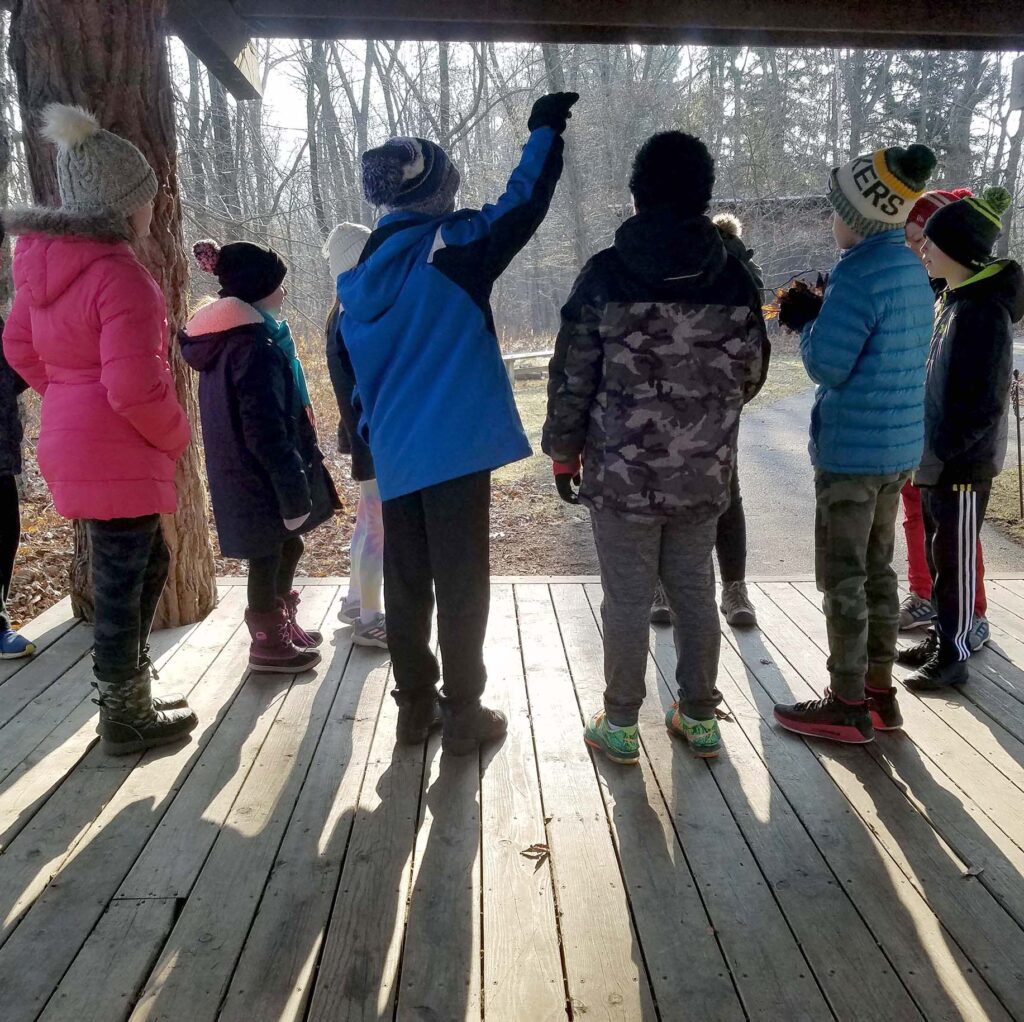School is No Longer the Way You Remember it to be.
Trust the Process of the Montessori Approach
Randomly, during the middle of the school day a few weeks ago, I asked our assistant principal a question about our standardized testing schedule. In our district, we have many.
This year, I’ve been assigned the task of “School Assessment Coordinator (SAC).” I kid you not, the non testing times throughout our school year just about matches the amount of peace time we’ve lived through here in the United States. In other words, other than a short stint during the 90s, there hasn’t been any.
Many educators feel we test students far too much. Instead of adding to it, we need to reduce the amount of time we dedicate to testing. When pushed, our district will respond back with a blanketed “we agree with you.” And yet, instead of taking assessments away, they continue to add more. In fact, this year our district added another new assessment at the early childhood level, starting at K3.
Our assistant principal responded with a fantastic metaphor. It was in reference to how children best learn, grow and thrive. I may have heard this before, but I’m grateful she reminded me of it in that moment.
She said, just like we wouldn’t pull a young plant up from its soil every few days to check on the progress of its growth underneath, we should approach a child’s developmental growth in the same manner. A child, just like a plant, will only thrive if we provide them with the love and care they need. Then we allow them the room they need to grow. We need to trust the process.
Education Has Changed Since We Were Kids
The Montessori method can look quite confusing to an outsider who is looking in. The classroom approach goes against most things we remember from our traditional schooling. It can look chaotic and unproductive. The teacher might look unprepared and not as responsive to student needs as they should be.
We remember sitting in a classroom controlled by adults who tried to regulate our every decision of our every day. We look back and see a teacher standing at the front of the classroom. Children are lined up in neat rows of desks, pencils poised.
Off to the side is a large desk equipped with a cup of red pens. The red ink would eventually bleed out over every assignment turned in. And when an assignment was returned, we remember feeling judged and insecure about the adult feedback.

During a recent district-wide workshop on writing, I was happily surprised to learn that traditional programs no longer use this approach as well. Just like the Montessori approach, they recognize how important it is not to discourage budding young writers from writing. During the workshop, the presenters emphasized content over writing mechanics.
So friends, the idea of a teacher marking up your child’s paper with a red pen is truly a relic from the past. Desks are being abandoned, too. Most classrooms are turning to work tables where children can sit and collaborate with one another.
Looking At the Big Picture
The Montessori approach is to educate the ‘whole child.’ A whole child education prioritizes the full scope of a child’s developmental needs. Educators do this as a way to advance educational equity and to ensure every child reaches their fullest potential.
But this approach takes trust, patience and time. A child, just like a plant, will only thrive if we provide it with the love and care it needs and give the room it needs to grow. We don’t need to pull the budding plant up from within its soil every few days to check on its progress. We need to focus on the big picture and trust the process.
Trusting the process in a time when data is constantly being collected and dissected, and when children are being quantified and analyzed is certainly a big request to make. Here are five reasons to help convince you why you should.
1. Montessori-Based Teaching Places The Child At The Reigns Of Their Own Learning Journey
Giving a child the gift of independence lets them know we value them and we know they’re capable. Children can grow up feeling empowered and safe in their abilities to make sound choices. When we trust them, they learn to trust themselves. Ultimately, we hope these children will grow up and become happy and productive members of their communities.
Of course, this looks different at different ages. Younger children want to do things by themselves, while elementary aged children want to think for themselves. Adolescents seek both physical and social independence as they navigate their childhoods into adulthoods. It’s important to remind ourselves of these developmental stages, both as teachers and as parents.
.

This might sound disorderly but there is a method to the madness. As children get older (the elementary years and beyond), they must meet certain academic expectations.
Students are given direction towards learning certain concepts and skill sets at different times in their lives. This is informed by both state and common core standards.
Teachers use a variety of tools to help students work independently while still meeting their goals, including work plans and time management strategies.
Research becomes of great interest to the older child. Children are given ample opportunity to deeply explore topics they choose. Teachers carefully prepare the classroom environment so that all choices are safe and desirable, but within those boundaries the child is free to explore.
2. The Montessori Curriculum Empowers Children To Find And Use Their Own Resources
“Montessori children” are very much at an advantage when it comes to independent, self-directed learning. This is true whether in the physical classroom or in a virtual one. Our children don’t sit around waiting for someone to lead them to where they should go.
During the elementary years (Dr. Montessori referred to these as the second plane of development) we believe children can’t be taught how to learn. Instead, they are being shown how to access their reasoning mind. Therefore, children are given the room to learn through exploration and self-interest. The teacher does not teach; rather the guide guides.
Montessori educators value and encourage independence in even their youngest students. Nurturing this valuable character trait is both empowering and necessary.
3. Montessori Children Advance Quickly
Parents who love the Montessori approach rave about how quickly their children advance in terms of self-esteem and academic abilities.
Research has backed this claim. Many Montessori children transition into a traditional middle school or high school ahead of or in a better position than their traditional counterparts. Much of this can be attributed to the confidence they have developed in becoming self-starters.
4. Children Are Given The Room To Make Mistakes And To Problem Solve
According to Dr. Montessori, learning should be more spontaneous than calculated:
“While the progress the children make seems wonderful, it can only be attributed to the freedom they have in exercising themselves. With methods in general use, teachers must very often correct children. Each time they make a mistake, the teacher must correct them. We, on the contrary, advise that children should not be corrected, that they should be free to make mistakes, not in an absolute sense, but only in their spontaneous efforts for perfection.”
Dr. Maria Montessori
In this case, perfection should not be read as everything being lined up perfectly so in say, an assigned math exercise. This type of expectation creates anxiety, frustration and perhaps even complacency of thought.
Instead, perfection can be understood in terms of the effort required to improve. The sense in which confidence is continually acquired to better our abilities and expand our way of thinking about the world. In this sense, perfection must be thought of in terms of the attainment of one’s interests, and not the correction of an ability.
5. The Montessori Classroom Is A Place To Observe, NOT just to assess.
I observe the students and the works they get out each day. I check in with them from time to time to make sure they are doing their work correctly. If they are way off base, I give suggestions to them or present the lesson again.
As a caregiver, try to take a moment to observe your child’s behavior before intervening. Their problem-solving skills might impress you!
How Parents Can Support This Work at Home
Dr. Montessori believed there are three essential components for exceptional learning – the child, the environment and the Montessori guide.
How can families continue the cultivation of independence in the home? Your child’s teacher has partnered with you to ensure all of these elements are strong and interconnected for the best possible experience.
It all starts with a shift in the way we view our children’s capabilities. They are often able to do much more than we realize. With a little bit of modeling, most children will eagerly accept a challenge. Your children want to do what you do. If you give them the necessary tools and support, they can begin practicing at home.
Giving our children tasks builds their confidence while helping them learn how to be contributing members of a community – in this case, their family.
Any child can be a ‘Montessori child,’ that is, capable of independence (freedom with responsibility) and self-direction.
The Montessori method is just one way to achieve this!
Do you have more questions about Trust the Process or the Montessori Method? Do you have a suggestion for another blog topic? Please send me an email with your ideas or experiences at grumble.services@gmail.com.
If you find this article helpful, please share it. Please join us, if you have yet to do so. Subscribe below and receive articles like this one in your email box weekly. Thank you!
Read More: EMPOWERING CHILDREN:
What Do I Mean By Active Vs. Passive Childhood?
All Rights Reserved • © 2023 Grumble Services LLC • grumbleservices.com

References and Read More:
Association Montessori Internationale
National Center for Montessori in the Public Sector
*This blogpost was inspired by an AMI Montessori Training lecture, 2007.



